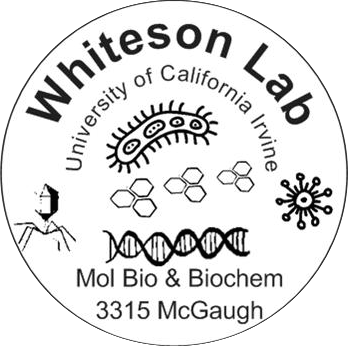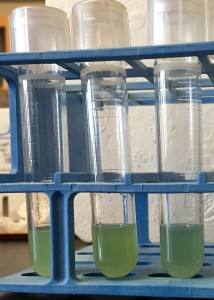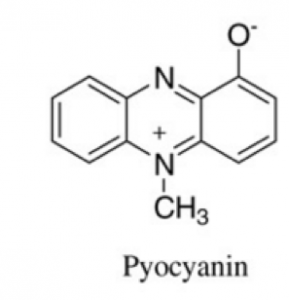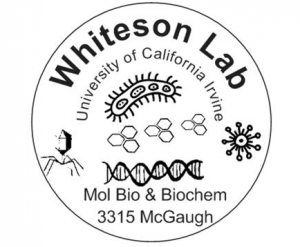PYOCYANIN
By: Joann Phan, with commentary from the September 26th Whiteson lab meeting
What is it? Pyocyanin is a redox active molecule, a phenazine, that is often produced by soil microbes. Phenazines have long been considered as antibiotics used as weapons in microbial community interactions. However, in low oxygen conditions, they can act as an alternative electron acceptor, expanding the ability of a bacteria to respire without much oxygen [1]. In the presence of oxygen, pyocyanin can be distinguished by its vibrant blue color.
When was it discovered? In the early 19th century in tainted “blue milk” [2]. In 1859, Mathurin-Joseph Fordos isolated this blue pigment from pus infected wounds [3].
Who produces it? Several Gram-negative bacteria, including Pseudomonas aeruginosa, are known to produce phenazines, including pyocyanin.
Where is it found? In many different environments, where some Gram-negative bacteria grow, including soil and chronic human infections such as wounds or the airways of Cystic Fibrosis (CF) patients [4].
Why is it important? Pyocyanin is both an alternative electron acceptor in low oxygen conditions, and it is capable of producing toxic redox molecules in the presence of oxygen, which can destroy neighboring microbial or even mammalian cells. In the sputum of CF patients, there is more pyocyanin found in patients as their lung function declines [4].
Left, Pseudomonas aeruginosa culture in presence of oxygen, taken by Joann Phan
Right, Pyocyanin structure from Wikipedia
References:
[1] Glasser, N. R., Kern, S., E. and Dianne K. Newman. (2014) Phenazine redox cycling enhances anaerobic survival in Pseudomonas aeruginosa by facilitating generation of ATP and a proton-motive force. Molecular Microbiology 92(2): 399-412.
[2] Jordan EO. (1899) BACILLUS PYOCYANEUS AND ITS PIGMENTS. The Journal of Experimental Medicine. 4(5-6):627-647.
[3] Fordos, Mathurin-Joseph – Dictionary definition of Fordos, Mathurin-Joseph | Encyclopedia.com. Retrieved from http://www.encyclopedia.com/doc/1G2-2830901476.html
[4] Hunter, R. C., Kepac-Ceraj, V., Lorenzi, M. M., Grotzinger, H., Martin, T. R., and Dianne K. Newman. (2012) Phenazine content in the Cystic Fibrosis respiratory tract negatively correlates with lung function and microbial complexity. American Journal of Respiratory Cell and Molecular Biology. 47(6): 738-745.



